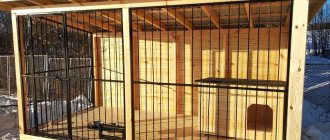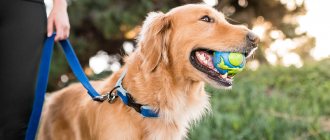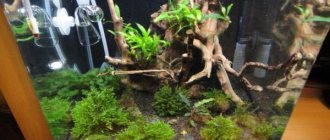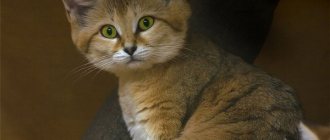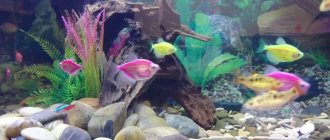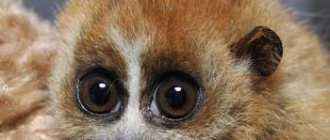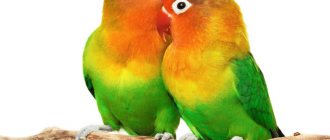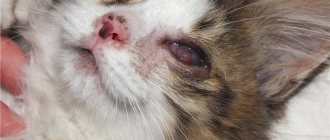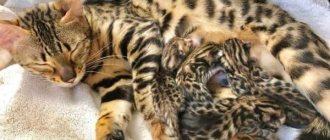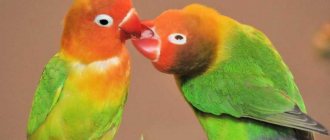When we decide to get a feathered pet, the question may arise whether a lovebird can live alone or whether it is better to take a couple of birds at once. The very name of parrots - “lovebirds” - speaks of extraordinary romance, because they are famous for their strong affection for each other, and after the death of a partner they grieve for a long time. Is it true that they cannot be kept separately? Let's figure out whether this is a myth or truth, using the example of two possible options: buying a parrot without a mate, losing one of the pets. We will also learn about the difficulties that the owner of a single lovebird may encounter.
Can a lovebird live alone?
Some people deliberately get only one parrot. Some do this with the goal of teaching the bird to talk. But it is very difficult to teach a lovebird words. In a year he will learn no more than 10-15 words.
Also, a bird may be left alone if its companion dies. This can happen due to some illness or as a result of a tragic event. Be sure to have your parrot examined by a veterinarian so that treatment can be started on time if it becomes infected.
Lovebirds usually live in pairs.
Male or female: looking for differences
Choosing a name is another task that requires knowledge of how to determine the sex of a lovebird. Parrots of this species are not inclined to imitate human speech, but are able to remember their nickname and respond to it. An absurd situation may arise when a parrot, which was thought to be a girl, turns out to be a boy.
External manifestations that are looked at when establishing gender:
- body size;
- head shape;
- beak;
- pelvic bones;
- plumage color;
- behavior.
Each sign separately does not guarantee correct sex determination. All features must be taken into account together.
Note the difference in size
Among lovebirds, males are usually larger than females. To use this trait to determine sex, you need to compare two or more parrots. Perhaps the bird with the most impressive dimensions will be a male.
What to do if a lovebird has lost a mate
If the other half died, then the lovebird will be bored. Perhaps the bird will become apathetic for some period. At this time, she needs to pay maximum attention.
- Be sure to check the conditions of detention.
- It is necessary to disinfect the cage, wash all the perches, drinkers, and feeders.
- It's worth reconsidering your diet.
- If there are diseases, treatment is started immediately so as not to lose the parrot.
- An excellent solution would be to get a second parrot. Lovebirds will quickly find a common language.
Nesting
Nesting is stressful for the bird’s body, no matter how many times it has laid eggs. At this time, her character, lifestyle, and behavior change. Hatching and caring for the chicks requires maximum strength from her. The male also takes part in the nesting process, but all responsibility for building the nest still falls on his partner.
Behavior Changes
The female shows increased activity, becomes a little nervous, devotes a lot of time to building the nest, and more often gnaws on mineral stones.
During the nesting period, the male becomes gentle and cares for his girlfriend. Coos and tries to feed her. Its readiness to mate is expressed in special movements. So, he rubs his cloaca against hard objects.
During mating, which occurs immediately after the construction of the nest is completed, the couple emits loud, piercing screams
Sometimes parrots fight, but the owner should not pay attention to this
Hatching period
Incubation begins 5-7 days after mating (the first egg is laid). The next day after the first, more eggs appear, subsequent ones every other day or one after another. One healthy bird puts 4-8 pieces in the nest.
Hatching lasts 19-26 days. The mother turns the clutch over twice a day, which prevents the embryo from sticking to the wall of the shell and dying. During incubation, she is not disturbed, cleaning the cage (the nest box is removed for the first time 2 weeks after the appearance of the last chick) and feeding as quietly as possible. After 1 week, the entire clutch is checked for fertilization. Unfertilized eggs are shiny.
The appearance of chicks
Chicks appear at home 20 days after the completion of laying. They have no feathers, they are blind and deaf. The sequence of birth depends on when the eggs were laid.
Caring for chicks
The first feeding of newborns occurs 2-3 hours after birth. The mother feeds them liquid from the crop. A few days later, they begin to feed on food brought by the male. But sometimes he does not do this and the person has to independently care for the chicks at home until they leave the nest (2 months after birth). All this time they are fed milk porridges - semolina or millet with the addition of fish, fat and sugar.
Liquid food is heated to a temperature of 40-60 degrees Celsius and given using a syringe without a needle. During feeding, the chicks are taken out of the nest and placed on something warm and soft.
Conditions for keeping one lovebird
A lonely lovebird needs a lot of attention. To do this, the owner must have a lot of free time. Some recommendations for keeping a single parrot:
- after acquisition, do not disturb the lovebird for several days. They give him time to adapt. You should only approach the cage to change water or food. At this moment, kind words are spoken to the bird;
- if the bird previously lived in a pair, then you need to often play and talk with it;
- released to fly. They close the windows and open the door to the cage when leaving the house. Physical activity will distract the parrot and will be good for the wings;
- place mirrors, ropes, ribbons, rings, bells, ladders, swings, wooden toys;
- They treat you with delicacies - cottage cheese, berries, herbs, sprouted grains, fruits.
Greenery
Dandelion
Dandelion leaves make a good vitamin food that lovebirds eat with pleasure. In addition to vitamins, dandelion contains a lot of mineral salts, as well as substances that stimulate appetite and promote digestion. Dandelion leaves can be fed to birds until late autumn, and vitamin food can be prepared for winter. In summer, vitamin flour is made from young leaves.
Spinach
Spinach contains many vitamins (C, B1, B2, E, D, P, carotene) and minerals, as well as proteins, sugars, easily digestible iron and potassium salts. Spinach leaves are beneficial for the functioning of the heart and circulatory system. However, it is not recommended to feed it to lovebirds in large quantities - this can cause diarrhea in the birds.
Spinach is an early ripening plant and is easy to grow on your windowsill or balcony. Parrots are given young leaves, picked before flowering.
Salad
This plant contains many vitamins and mineral salts, as well as substances that have a calming effect on the nervous system. Lettuce, like spinach, is an early-ripening plant and is easy to grow at home.
Asparagus
Rich in vitamins C, B1, B2, PP, carotene and other beneficial substances. Lovebirds are given young shoots.
Dill
Contains B vitamins, carotene, vitamin C, calcium, iron and phosphorus salts, as well as essential oils. It is recommended to feed young leaves to lovebirds.
B vitamins have a beneficial effect on the activity of the nervous system, regulate metabolism, increase the body’s protective properties by participating in protein metabolism, and also promote tissue restoration.
Green onions
Rich in vitamins C, B1, B2 PP and carotene. Onions are very useful for parrots and have medicinal properties. It improves digestion by promoting the secretion of gastric juice, destroys microbes and dysentery bacteria, diphtheria and tuberculosis bacilli, streptococci and staphylococci, and is also a good prophylactic against helminthic diseases in lovebirds.
Aggressive behavior of a lovebird
Sometimes lonely birds attack their owners and bite. Usually females behave this way. This is due to a number of reasons.
| The onset of mating season | This is how a surge of hormones manifests itself. The parrot needs a companion or hormone therapy. If aggression manifests itself in a pair, then the chicks suffer from the aggressive female. They are put away. |
| Incubation of eggs by a female | This is possible even without the participation of a male. Unfertilized eggs are not touched, as the female may lay others. Due to constant laying, the body is depleted. The female just needs to be left alone. |
| The bird's desire to be alone | They will equip a separate house in a cage so that the parrot can feel comfortable there. Even these contact birds sometimes have too much communication. |
| Desire to dominate people | The owner can spray the lovebird with water and leave him alone in the room. It is forbidden to hit a parrot or shout loudly for punishment purposes. |
| Lack of sympathy | One of the birds is placed in another cage. The cages are placed close to each other and the parrots are allowed to get used to it. If the situation repeats, it is necessary to replace the partner. |
Age-related features of sex determination
It is much easier to determine the sex of lovebirds when they grow up. This is explained by the absence of obvious external signs that help judge gender. Lovebird chicks within the same subspecies are similar to each other, and it is not clear where the female is and where the male is.
It's quite easy to figure out how to distinguish between lovebirds that are ready to breed. Mature birds differ in their habits. Females feel the need to procreate and become overly fussy. They stock up on material for the future nest. They lay eggs even if kept alone. The males perform something similar to mating games: they dance, flapping their wings, and shout invitingly.
High-quality nutrition and dangerous diseases
The lifespan of a macaw at home is affected by the quality of the food it eats. It is based on a grain mixture of oats, wheat, sunflower, and corn. The supply of vitamins in the body is replenished by fruits and vegetables - apples, pears, cucumbers, carrots, bananas, citrus fruits. Be sure to give a variety of nuts. We talk more about the nutrition of macaw parrots in the article “Keeping and feeding a macaw parrot at home.”
Timely medical care in case of illness of a pet is of great importance. But there are fatal diseases from which there is no salvation, when even a qualified doctor cannot provide help. These include ornithosis, which affects the nervous system and lungs. No less dangerous are tuberculosis, malignant tumors, endocrine and cardiovascular diseases.
All types of macaws are prone to sinusitis and bronchitis. Lack of treatment can lead to the death of the bird.
Difficulties
Sometimes you come across lonely parrots with whom you just can’t establish relationships . They can peck the hand, thereby preventing the owner from approaching them and their territory. It has been observed that females are more likely to behave hostile towards humans than males. This usually happens during the nesting season. Keep in mind that a female lovebird can create a clutch alone. Only such eggs will not contain embryos. But no one canceled instincts. Therefore, she will do everything possible to protect the “chicks”.
However, buying a male does not guarantee that you will become friends. Boys can also be a problem. After all, each parrot has its own character, its own unique characteristics. Ornithologists say that lovebirds that have not yet left the nest are easier to tame. Therefore, it is advised to buy young chicks .
Is it possible to teach a budgie to talk?
Budgerigars are one of the most beautiful and popular pets in the bird world. With the right approach, they become completely tame and speak beautifully. ... When you teach a boy or girl budgie to speak, repeat the same word several times until the pet learns it.
Interesting materials:
How do human races differ? What is the difference between ruffles and frills? What is the difference between cones and pasta? How are Parker pens different from regular pens? What is the difference between flip-flops and Pantolet? What is the difference between flip-flops and slippers? What is the difference between strong and weak electrolytes? What is the difference between complex and compound sentences? What is the difference between mixed and deciduous forests? What is the difference between category A and B sausages?
Stressful situations
Just like humans, birds are greatly affected by stress. For parrots, moving to a new home, adding another pet to the house, giving birth to chicks, and changing their usual food to something new becomes stressful. In a word, everything that happens rarely and unexpectedly. Under no circumstances should one be skeptical about such sensitivity of birds and perceive it as spoiled behavior.
What you consider unimportant is very important for the bird, and your ignorance of its needs can cause the manifestation of the disease
Most often, stress pushes parrots to self-pluck. In difficult times for birds, they calm down by plucking healthy and beautiful feathers from their bodies. If this problem is not resolved in time, the bird may remain bald and become seriously ill, because feathers allow it to maintain an acceptable body temperature and not become hypothermic. During times of stress, you need to show maximum attention to the bird and if you detect the slightest deviations from the usual behavior, diet and health status, take her to the veterinarian.
It is best to avoid stressful situations altogether. The nervous shocks experienced by the bird leave an imprint on its general condition. The more stress a bird experiences, the higher its chances of premature death. Everything is like with people: the calmer life is, the longer it is, and the stronger the health.

